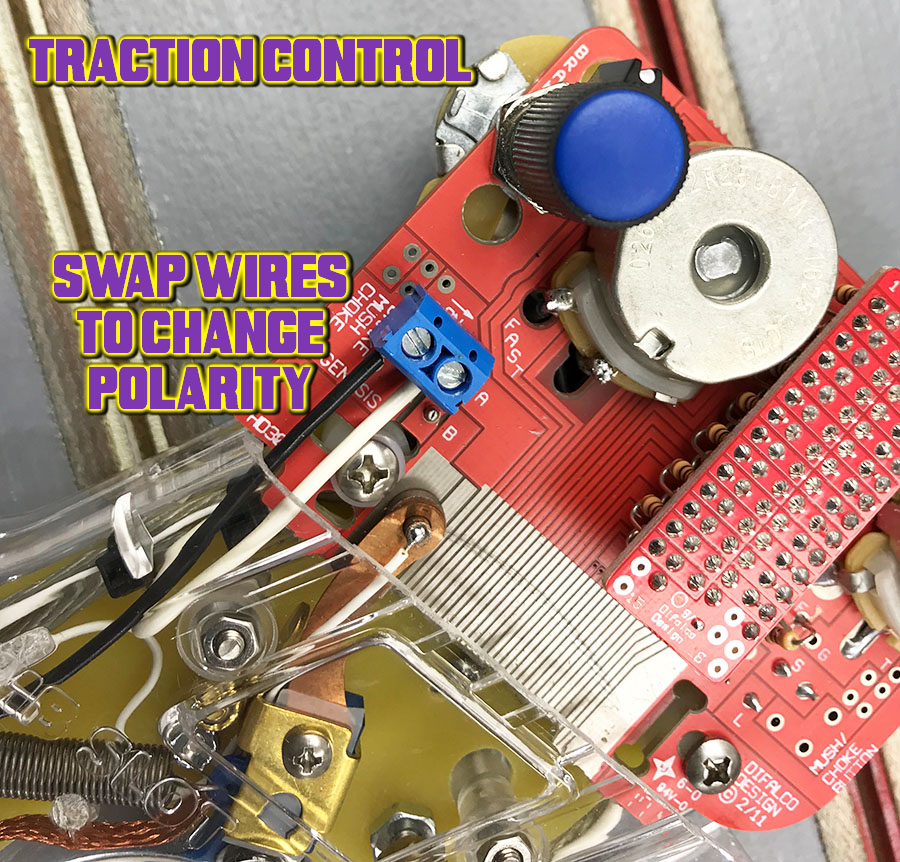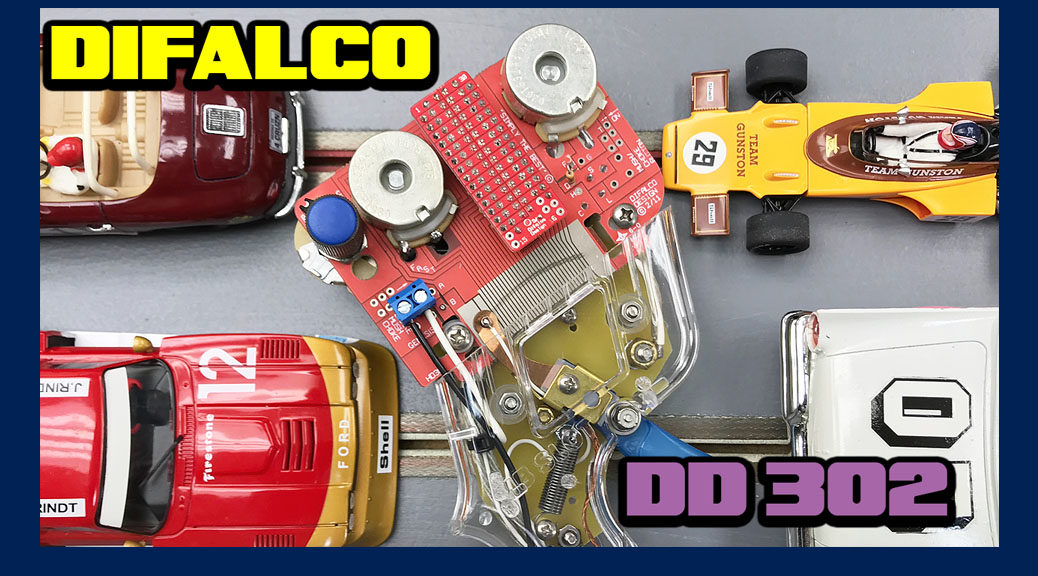From simple home sets to the large commercial tracks, the options for the controller in your hand on race day can be almost mind boggling.
And that can easily proved if you just ask the simple question: “What controller do you recommend?”
The answer just isn’t that simple I am afraid.
There are many great choices, but they do not always relate to the type of slot car racing you are doing.
If you are just occasionally racing at home, this controller is likely not for you. But if you are into the competition side of our hobby, or searching for very precise control on a wide variety of models, this just might be the answer you were looking for.
Now I will caution you now, this is a very advanced controller with technical features that can be a challenge to describe. We shall do our best but at the end of the day it is how well the controller functions.
Instead of making you wait, I will post my comments FIRST. After all, regardless of all the bells and whistles the real question is: “Does it work?”
And THAT is what it does very well. I tested the controller in a voltage range of 10 to 12 as these are what we use here. With a variety of the most common motors found in our 1/32 hobby.
Very smooth trigger motion as I expected and the range of sensitivity is very impressive. You really can feel the difference as you adjust the sensitivity and traction control.
Is it far and away better than the DD300 models I already have? For my racing? No. With our track being smaller and we only race simple 1/32 motors, the 300 is hard to beat. Does it have more precise control? Of course. I noticed it the most on higher powered motors like the Slot.it Flat 6 and some of the very touchy Scalextric slimlines.
But my smaller field of motors is just a slice of the capabilities of the controller. If you are racing high power commercial motors or even retro based cars, this is where the controller would really shine.
Construction is solid and the overall feel is excellent. So is this the next controller for you? If I were racing commercial or the retro scene, I would certainly have this at the top of my wish list. It’s also appealing to the scale 1/32 enthusiast who race a wide variety of cars and tracks and really want to dial them in.
Closer Look
First is the different design than my standard DD300. It has a “all in the handle design” with the heat sink built in on the side of the controller. The handle is the familiar PARMA design but with MB Slot printed on the side. No worries, it’s all the same.

Heavy duty, but flexible 12 AWG wiring can handle anything I could throw at it. This one is ready for the standard 3 bolt hook up.

In addition to the standard brake and sensitivity controls, it also has “Traction Control”.

But what exactly is that?
Traction control helps soften the power on the exit of a turn to reduce the likelihood of overpowering the car and sliding out. This is useful for non-magnet applications.
I asked Steve Sawtelle of Slot Car Corner to lend his knowledge on the subject as well:
Traction Control Feature
The Difalco DD302 controller differs from other controllers in the Difalco Neo family in that it has a third “knob” which allows advanced racers to adjust the traction control feature. Here’s how it works:
- When the traction control adjustment knob is in the full clockwise position, the traction control feature does not come into play. Think of it as being turned off in this position – it has no effect on the controller’s performance.
- As the traction control adjustment knob is turned In a counterclockwise direction, the traction control feature gradually reduces the amount of voltage the controller sends to the track/car across all controller bands EXCEPT the last band.
- Whenever the racer pulls the trigger to full throttle (i.e. last band), the traction control setting is automatically bypassed and the controller passes the full power supply voltage to the track/car.
Let’s look at an example of when a racer might use the traction control feature and how it might benefit them. Suppose you are racing on a very tight, twisty track. You’re racing a car that works well on other less technical tracks but you’re having problems with this track in the tight, technical corners – particularly on corner exit where the car’s rear end is breaking free or the car deslots. You’ve tried to compensate using various combinations of braking and sensitivity adjustments (using the other two “knobs”); however, the car is still difficult to drive consistently.
Using the traction control feature, you adjust it so less voltage is flowing to the track in the technical stuff and after some experimentation, you find a setting where the car (i.e. you the driver) is able to corner faster and more consistently with fewer de-slots. When you get to a straightaway section and go to full throttle, the traction control is bypassed so you don’t lose any top speed.
Note: Like the braking and sensitivity adjustments, taking full advantage of this feature requires some practice and experimentation. The further you turn the traction control adjustment knob counterclockwise, the larger the “jump” in voltage between the next to last band and the last band whenever you pull the trigger to full throttle. This large jump can disrupt your car – particularly if your timing is just a little off (early) while exiting a corner. Again, practice and experimentation are the key to taking full advantage of the traction control feature.
If that wasn’t enough adjustment for you, there is more. This controller utilizes “Networks”. These are circuit boards that you can remove and plug in a different one. So what are those exactly?


It allows the racer to change the overall band resistance to best suit the type of motor being used.
The standard networks are soldered and ready to install and have the same value resistance per band. The custom networks have miniature sockets and various values of resistors that plug in so they can be mixed and matched to get the desired band response.
How to choose a network:
Many factors affect the network you should choose. Faster motors, of any scale, require more power and a faster response network. Higher the track voltage will make a controller feel more sensitive (faster) and a lower track voltage will make a controller feel less sensitive (slower). You’re driving preference will also influence your choice in networks.
Any network can be used for any scale depending on the above factors.
And if that wasn’t enough…
Are you the kind that loves electronic tinkering? Then this next option should put you in control heaven.
Custom Resistor Networks

You can order a network with a variety of resistors than YOU can install and choose yourself. You can mix them up and truly fine tune this controller for your personal taste.
CLICK HERE FOR ALL THE NETWORKS from DiFalco
There is a lot going on with this controller to say the least and for some this is not the ideal choice. Yet I have met many enthusiasts who are just as passionate about what controller is in their hand as the cars on the track. The price point of $196.00 will seem out of the question for the average home enthusiast, but for the racer who has that passion? Actually very fair. With some controllers costing much more, the demand for advanced control is there and only YOU can decide if the price of admission is worth it.
This kind of investment isn’t easy for some. It took me a while but I outfitted our 3 Lane MIDMO Speedway with the DD 300’s. Going on the third year, they are still going strong and I do not regret the investment. Easy to clean/maintain is important to me and the oped design of DiFalco allows that. The durability of the construction has proven itself to me.
Overall this is a very capable controller that would serve you well on race day. With DiFalco quality and excellent customer service to back them up, it is worthy investment.
-Harry
I acquired mine direct from DiFalco
Here are two of the hobby’s leading dealers who stock DiFalco Controllers and parts.





